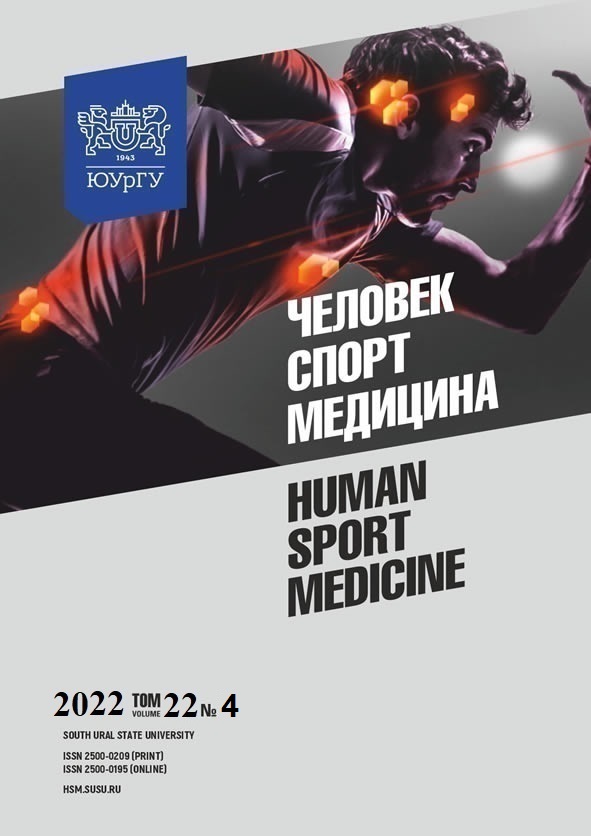ANTIOXIDANT STATUS IN ATHLETES DURING INTENSIVE EXERCISE
Abstract
Aim. The paper investigates salivary catalase activity in athletes before and after exercise by using H2O2-luminol chemiluminescent reactions. Materials and methods. The study involved athletes aged 20–30 years (n = 25). All athletes are professional football players (Candidates for the Master of Sport degree). Saliva sampling was performed twice: before and after exercise. Antioxidant status was assessed by means of H2O2-luminol chemiluminescent reactions. Results. The study showed a relationship between salivary antioxidant status and exercise. Antioxidant degradation was observed, probably associated with a decrease in the activity of peroxidase enzymes. The pro-oxidant system demonstrated decreased performance, as evidenced by a decline in such CL-luminescence parameters as maximum intensity, amplitude, and light sum, which demonstrate reactive oxygen species. However, by days 4 and 5, the results were comparable with the baseline training values. The greatest number of ROS (Smax) was observed on day 4 after exercise. The peak performance of ROS was observed on day 3, as well as the greatest difference in HR before and after exercise and a decrease in the rate of ROS neutralization. Conclusion. Thus, a decrease in the rate of ROS neutralization by day 3 was observed. On day 4, the adaptation of the antioxidant system to salivary ROS levels and its activation were noted. The results obtained can be considered the initial stage for identifying biological stress markers for stress detection in subjects and health protection. Thus, it is planned to implement a personalized approach in sports medicine.
References
References on translit
Copyright (c) 2023 Human. Sport. Medicine

This work is licensed under a Creative Commons Attribution-NonCommercial-NoDerivatives 4.0 International License.















